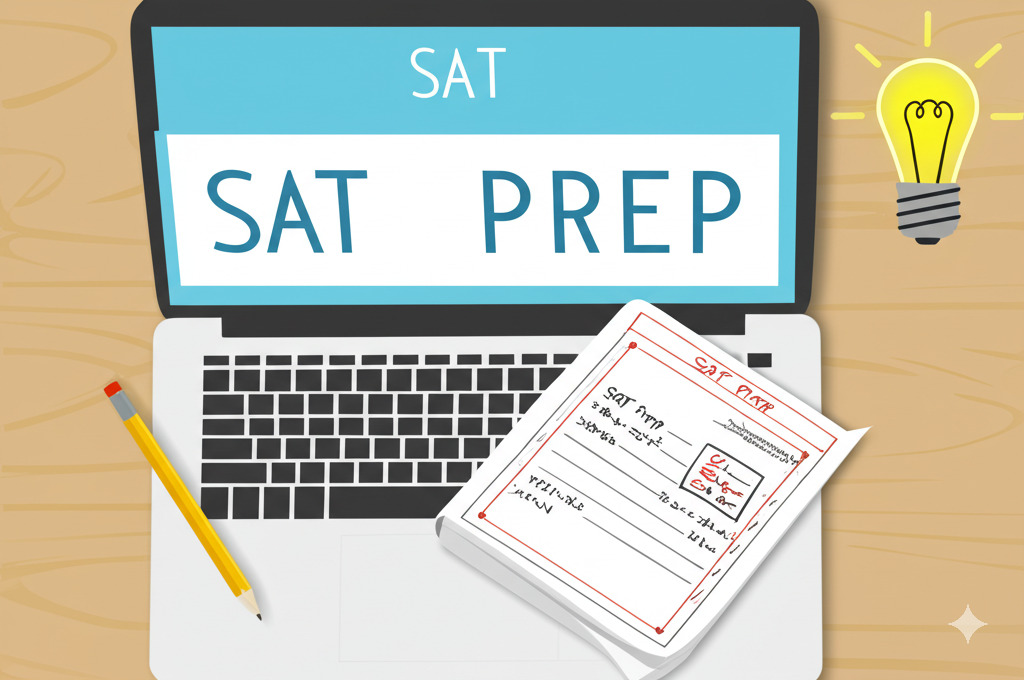The SAT is a critical step on the path to college admissions. Achieving your best score requires more than just knowing the material; it demands a strategic approach and consistent effort. This ultimate SAT study guide provides essential tips and strategies to help you conquer the test and reach your target score.
1. Understand the SAT Format and Scoring
Before you start studying, familiarize yourself with the test structure. The Digital SAT consists of two sections: Reading and Writing, and Math. Each section is divided into two modules, and the difficulty of the second module adapts based on your performance on the first. Understand how the test is scored (scaled score from 400-1600) and what constitutes a good score for your target universities.
Key Points:
- Sections: Reading & Writing, Math.
- Format: Digital, adaptive testing across two modules per section.
- Scoring: 400-1600 scale. Research target scores for your desired colleges.
2. Take a Diagnostic Test and Set Realistic Goals
Start with an official full-length SAT practice test under timed conditions. This diagnostic test provides a baseline score and highlights your strengths and weaknesses across different question types and content areas. Based on this baseline and your target score, set specific, measurable, achievable, relevant, and time-bound (SMART) goals for your overall score and for each section.
Action Steps:
- Baseline Score: Use an official practice test (available on the College Board website or Bluebook™ app).
- Analyze Results: Identify weak areas (e.g., specific math concepts, types of reading questions).
- Set Goals: Determine your target score and create a realistic improvement plan.
Take a Diagnostic Mock Exam
A mock exam simulates the real test environment, helping you assess readiness, manage time, and reduce anxiety.

3. Create a Consistent Study Schedule
Consistency beats cramming. Develop a realistic study schedule that allocates specific time slots for SAT prep each week. Aim for focused study sessions (e.g., 50-60 minutes) followed by short breaks. Prioritize subjects based on your diagnostic results, dedicating more time to areas needing improvement.
Scheduling Tips:
- Be Realistic: Factor in schoolwork, extracurriculars, and downtime.
- Balance Subjects: Cover Reading, Writing, and Math regularly.
- Weekly Review: Set aside time each week to review concepts and practice questions.
- Stick to It: Treat your study sessions like important appointments.
4. Master Key Content Areas
Focus your study efforts on the specific skills and knowledge tested on the SAT.
- Reading and Writing: Practice identifying main ideas, understanding vocabulary in context, analyzing arguments, interpreting data visualizations, and mastering grammar, punctuation, and sentence structure. Focus on understanding Standard English conventions.
- Math: Review core concepts in Algebra (linear equations, systems), Advanced Math (quadratics, exponents), Problem-Solving and Data Analysis (rates, ratios, percentages, statistics), and Geometry and Trigonometry (less emphasis, but still important). Practice with and without the built-in Desmos calculator.
Resource Tip:
Utilize official College Board materials and Khan Academy’s free SAT prep resources, which are aligned with the test content. Consider reputable prep books or tutoring for targeted help.
5. Practice Regularly and Analyze Mistakes
Consistent practice is crucial. Regularly take full-length practice tests using the Bluebook™ app to simulate the digital, adaptive format. After each test or practice set, meticulously review every question you missed or were unsure about. Don’t just look at the correct answer; understand why it’s correct and why your choice was wrong. Keep an error log to track recurring mistakes.
Effective Review Strategy:
- Identify Error Type: Was it a conceptual gap, calculation error, misreading, or time management issue?
- Understand the Concept: Revisit the underlying topic if needed.
- Learn from Mistakes: Note down the correct approach and common traps.
6. Develop Smart Test-Taking Strategies
Knowing the content isn’t enough; you also need test-taking savvy.
- Time Management: Practice pacing yourself during practice tests. Use the built-in timer and learn how much time to allocate per question on average.
- Process of Elimination: Actively cross out incorrect answer choices to increase your odds of selecting the right one.
- Educated Guessing: There’s no penalty for guessing on the SAT. If you can eliminate even one option, make an educated guess.
- Use Tools Wisely: Get comfortable with the Bluebook™ app tools, including the Desmos calculator, annotation features, and question flagging.
Boost Your Math Score
Need help with specific concepts? Get personalized math tutoring for SAT, ACT, GMAT, GRE, and more.

7. Prioritize Mindset and Well-being
SAT prep is a marathon. Avoid burnout by maintaining a healthy balance. Get adequate sleep (especially the night before the test), eat nutritious meals, and incorporate exercise and relaxation activities into your routine. Stay positive, focus on progress, and believe in your ability to improve.
Final Week Prep:
- Do light review; avoid heavy cramming.
- Confirm your test center location and what to bring.
- Relax and get plenty of sleep the night before.
Conclusion
Success on the SAT is achievable with a structured study plan, consistent practice, and smart strategies. By understanding the test, setting clear goals, mastering the content, practicing effectively, and taking care of yourself, you can confidently approach test day and achieve your best possible score. Good luck!


